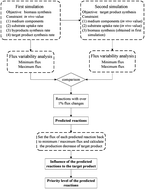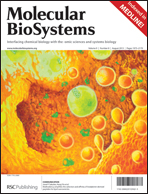Bacillus subtilis is a Gram-positive sporiferous bacterium widely used in a variety of industrial fields as a producer of high-quality vitamins, enzymes and proteins. Many genetic modifications and evolutionary engineering optimisations aiming at obtaining a better performing strain for its products have been studied. As genome-scale metabolic network models have gained significant popularity as effective tools in metabolic phenotype studies, we reconstructed a genome-scale metabolic network of B. subtilis – iBsu1147. The accuracy of iBsu1147 is validated by growth on various carbon sources, single gene knockout and large fragment non-essential gene knockout simulations. The model is used for the in silico metabolic engineering design of reactions over/underexpressed or knockout for increasing the production of four important products of B. subtilis: riboflavin, cellulase Egl-237, (R,R)-2,3-butanediol and isobutanol. The simulation predicted candidate reactions related to the improvement of strain performance on related products. The prediction is partly supported by previously published results. Due to the complexity of the biological system, it is difficult to manually find the factors that are not directly related to the production of the target compounds. The in silico predictions provide more choices for further strain improvement for these products.

You have access to this article
 Please wait while we load your content...
Something went wrong. Try again?
Please wait while we load your content...
Something went wrong. Try again?


 Please wait while we load your content...
Please wait while we load your content...